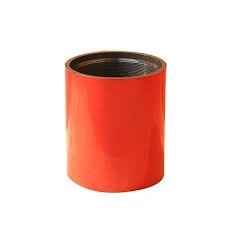- Afrikaans
- Albanian
- Amharic
- Arabic
- Armenian
- Azerbaijani
- Basque
- Belarusian
- Bengali
- Bosnian
- Bulgarian
- Catalan
- Cebuano
- Corsican
- Croatian
- Czech
- Danish
- Dutch
- English
- Esperanto
- Estonian
- Finnish
- French
- Frisian
- Galician
- Georgian
- German
- Greek
- Gujarati
- Haitian Creole
- hausa
- hawaiian
- Hebrew
- Hindi
- Miao
- Hungarian
- Icelandic
- igbo
- Indonesian
- irish
- Italian
- Japanese
- Javanese
- Kannada
- kazakh
- Khmer
- Rwandese
- Korean
- Kurdish
- Kyrgyz
- Lao
- Latin
- Latvian
- Lithuanian
- Luxembourgish
- Macedonian
- Malgashi
- Malay
- Malayalam
- Maltese
- Maori
- Marathi
- Mongolian
- Myanmar
- Nepali
- Norwegian
- Norwegian
- Occitan
- Pashto
- Persian
- Polish
- Portuguese
- Punjabi
- Romanian
- Russian
- Samoan
- Scottish Gaelic
- Serbian
- Sesotho
- Shona
- Sindhi
- Sinhala
- Slovak
- Slovenian
- Somali
- Spanish
- Sundanese
- Swahili
- Swedish
- Tagalog
- Tajik
- Tamil
- Tatar
- Telugu
- Thai
- Turkish
- Turkmen
- Ukrainian
- Urdu
- Uighur
- Uzbek
- Vietnamese
- Welsh
- Bantu
- Yiddish
- Yoruba
- Zulu
tubing coupling
Understanding Tubing Couplings An Essential Component in Oil and Gas Operations
In the ever-evolving landscape of oil and gas drilling, efficient extraction and transportation of hydrocarbons are paramount. At the core of these operations lies a critical component known as the tubing coupling. This seemingly simple element plays a significant role in ensuring the integrity, safety, and efficiency of well operations. In this article, we will explore what tubing couplings are, their types, applications, and the importance of selecting the right coupling for a given operation.
What are Tubing Couplings?
Tubing couplings are mechanical fittings that connect different segments of steel tubing used in oil and gas drilling and production operations. They serve as a linkage between sections of pipe that transport oil, natural gas, and other fluids from the production zone to the surface. The primary purpose of tubing couplings is to maintain a continuous flow while providing structural support to withstand various operational stresses such as pressure, tension, and temperature changes.
Types of Tubing Couplings
Several types of tubing couplings are available, each designed for specific applications and conditions. Some of the most common types include
1. Standard Couplings The most basic type, standard couplings are used for general applications where strength and tight joints are required. They are typically made from high-grade steel and are relatively easy to install.
2. Flanged Couplings These couplings feature flanges at both ends that are bolted together, providing a secure connection. Flanged couplings are often used in high-pressure applications where additional safety is necessary.
3. Threaded Couplings Threaded connections provide a reliable and easy method of joining two pipe sections. These couplings utilize male and female threads and are commonly used in various oil and gas applications.
4. Welded Couplings In welded couplings, the tubing sections are joined together by welding. This method provides a permanent connection, making it ideal for high-stress situations and environments.
5. Couplings with Centralizers These specialized couplings come equipped with centralizers that help to maintain the position of the pipe within the wellbore. This reduces wear and tear on the pipe and ensures a stable operation.
tubing coupling

Applications of Tubing Couplings
The applications of tubing couplings are broad and vital to the oil and gas industry. They are primarily used in
- Drilling Operations Tubing couplings enable the efficient transfer of drilling fluids, which are crucial for lubricating drill bits and transporting cuttings out of the well.
- Production Once drilling is complete, tubing couplings play a key role in delivering hydrocarbons from the reservoir to the surface. A reliable coupling ensures that there are no leaks, maintaining the efficiency of the extraction process.
- Transport In pipeline systems, tubing couplings are used to join lengths of pipe, enabling the transportation of oil and gas over long distances without compromising integrity.
Importance of Selecting the Right Coupling
Choosing the appropriate tubing coupling is critical for several reasons. First and foremost, the coupling must be compatible with the type of fluids being transported, as certain materials can corrode or degrade in specific environments. Additionally, the mechanical properties, such as tensile strength and resistance to fatigue, must match or exceed the operational demands to prevent failures.
Moreover, the installation process also influences the choice of coupling. For instance, threaded couplings may require special tools and expertise for proper installation, whereas welded couplings would involve a more permanent commitment.
Conclusion
In summary, tubing couplings are essential components of oil and gas operations, facilitating the safe and efficient transport of hydrocarbons. A thorough understanding of the different types, applications, and selection criteria for tubing couplings can significantly impact the success of well operations. As the industry continues to grow and evolve, innovations in coupling technology will undoubtedly play a crucial role in enhancing operational efficiency and safety in oil and gas extraction. As operators navigate the challenges of modern-day energy demands, the significance of reliable and well-designed tubing couplings cannot be overstated.
-
Tubing Pup Joints: Essential Components for Oil and Gas OperationsNewsJul.10,2025
-
Pup Joints: Essential Components for Reliable Drilling OperationsNewsJul.10,2025
-
Pipe Couplings: Connecting Your World EfficientlyNewsJul.10,2025
-
Mastering Oilfield Operations with Quality Tubing and CasingNewsJul.10,2025
-
High-Quality Casing Couplings for Every NeedNewsJul.10,2025
-
Boost Your Drilling Efficiency with Premium Crossover Tools & Seating NipplesNewsJul.10,2025







